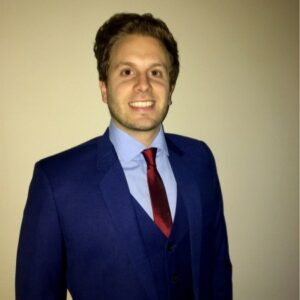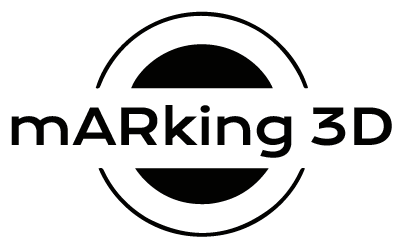ARtery 3D’s Chief Scientific Officer, Dr. Karl Waked, is co-author of an article that has recently been published in the Aesthetic Surgery Journal (ASJ): Visualizing the Individual Arterial Anatomy of the Face Through Augmented Reality— A Useful and Accurate Tool During Dermal Filler Injections. This also indicated that the effectiveness of the ARtery 3D technology is now officially scientifically proven.
Thanks to ARtery 3D, cosmetic doctors are now able to locate the exact place of every unique artery, and thus to reduce the risk and possible discomfort for their patients. Allow Dr. Waked to give you some revealing insights into his work, and read on!
About the article in ASJ
We are very proud that we got to publish an article in a prominent medical journal such as the Aesthetic Surgery Journal. It’s charming to notice that people from within the cosmetic and aesthetic field are seizing the opportunity to hop on the train to the future of fillers. By showing interest in our technologies and our application, you show interest in the highly interesting future of filler treatments and aesthetic surgery.
In the study that was published in ASJ recently, Dr. Karl Waked and his co-authors highlighted the gap in contemporary techniques on filler treatments. Hereby, we mean the unpredictable location of the superficial facial arteries and how to provide a solution to make filler injections more precise and qualitative.
Check the video in which Dr. Waked highlights some key takeaways from this scientific article HERE.
The main objective of the research that Dr. Waked and his colleagues did, was to evaluate the accuracy of the ARtery 3D augmented reality application that visualizes the individual arterial anatomy of the face.
In the article, Dr. Waked and his co-authors concluded that the combination of a risk-free MRA to map the individual arteries of the face and the processing into an AR image may be considered as a useful and accurate tool.
It could mean the breakthrough for an optimal patient experience and extremely accurate dermal filler injections. We are thrilled to spread the news this way, because now not only our clients and partners, but also the readers of Aesthetic Surgery Journal know all about our innovative techniques!
Dr. Karl Waked speaking
In the light of the release of our scientific study, we took the chance to speak to our Chief Scientific Officer, Dr. Karl Waked. He wanted to share with you some insights on his role within ARtery 3D and our product.
Dr. Waked, What is your exact role within ARtery3D?
 My official title within the company is CSO or Chief Scientific Officer. Basically, that means I’m in charge of the scientific studies with regards to ARtery 3D and future products. As we launched a product that is used by Health Care Practitioners worldwide to improve the patient’s treatment, we need to gather scientific data that supports ARtery 3D and the message we convey. The same will account for other products that will be launched in the future.
My official title within the company is CSO or Chief Scientific Officer. Basically, that means I’m in charge of the scientific studies with regards to ARtery 3D and future products. As we launched a product that is used by Health Care Practitioners worldwide to improve the patient’s treatment, we need to gather scientific data that supports ARtery 3D and the message we convey. The same will account for other products that will be launched in the future.
I am proud to say that we already have five publications, discussing different aspects of ARtery 3D: the developed MRI sequence, the periorbital arterial anatomy and its variations, the visualization of the arterial anatomy, and the accuracy of ARtery 3D. One of our latest publications also won the prize for best international paper in the journal Aesthetic Surgery Journal Open Forum. From time to time, I grab the opportunity to present a few of our results on international meetings, such as the ISAPS meeting in Vienna a few months ago or EURAPS meeting in Naples just last month.
Besides the scientific aspect of the company, I am involved in several other activities as well. These mainly involve the roll-out of the MRI sequence in radiology centers, the validation of the developed augmented reality workflow, and from time to time I try to discuss some ideas with the marketing department of the company as well. The variety of functions and tasks allows me to work together with different people within the company, learn from them and build up dynamic and interesting relationships.
How did the idea for founding ARtery 3D arise? How did you come up with this innovative product?
remember the very first moment we talked about a potential AR-application: it was after I gave a presentation on the use of augmented reality in plastic surgery at the plastic surgery department in the University Hospital of Brussels. Back in 2018, augmented reality was quite unknown in the surgical world and the few robust applications were mainly proofs of concept. We immediately knew that there was a need for a practical and useful product… and there was a market as well.
As two of the founders (Benoit Hendrickx and I) are plastic surgeons, the choice to develop something within our field of expertise was a no-brainer. Filler-induced arterial embolizations are to-date still the most feared complication for any injector, so it was clear that there was a need for a product like Artery 3D. We put our heads together and brainstormed on how we could visualize the individual arterial anatomy of the face, unique and different for each person. We brought a radiologist (Marc Mespreuve), a financial expert (Thierry Hazevoets) and an IT-expert (Joris De Ranter) to the team and founded the company Augmented Anatomy. The central philosophy has always been: visualize the individual anatomy through augmented reality. ARtery 3D is the first practical application that enables any health care practitioner to do that. We are very proud of our result.
How would you describe your product and your company to others?
The name “Augmented Anatomy” says it all: see the anatomy through augmented reality. The core principle of the company has always been to provide an anatomical GPS for practitioners, a way to see through the skin and guide anyone before or during an operation to taylor the treatment and provide a patient-centered approach. ARtery 3D is our first product that focuses on the arterial anatomy of the face to guide our colleagues during filler or botox injections. However, the software, workflow and platform that we have developed for ARtery 3D will enable us to offer a wide array of ground-breaking and promising products in the future.
How do you define the importance of MRI in the ARtery 3D working way and the procedure of filler treatments?
Briefly said, MRI is the basis of Artery 3D, the first step of our developed workflow. That is the simple answer: it is necessary for our product to work. The philosophy behind this choice is more complex and deserves some enlightenment.
When we developed the foundations for ARtery 3D, we looked for the easiest way to visualize the individual anatomy. After all, our goal was to deliver the most accurate and patient-specific AR-image of the facial arteries. Three options were available: ultrasound (US), computed tomography (CT) and Magnetic Resonance Imaging (MRI). As we aim to provide a risk-free and non-invasive imaging technique, we ruled out the option of CT. CT requires intravenous contrast and exposes the patient to harmful X-rays, so it was clear that we needed to avoid this in an aesthetic setting.
The choice to go for MRI over US was based on the numerous advantages that MRI has over US. Although US provides a non-invasive way to visualize the arteries, there are a lot of shortcomings and downsides to this technique: it is time-consuming, operator-dependent, and needs to be repeated for each procedure. Moreover, it is quite difficult to visualize the smaller arteries of the face, let alone to perform a filler injection during the US examination.
MRI, in our opinion, takes care of all these shortcomings, as we were able to develop a new sequence that can map the arterial network without any contrast and through a single exam. I have to give all credits for this huge accomplishment to Marc Mespreuve, co-founder and professor in radiology. He teamed up with the three biggest MRI-companies in the world (GE, Philips, and Siemens) to develop what we call a “3D infrared-enhanced Time of Flight MRI of the face”. Of course, it is required that the patient visits a radiology center to map their anatomy, but this image can be retrieved through the ARtery 3D application each time he or she visits their practitioner for a new treatment. A one-time, risk-free MRI-mapping for a lifetime of patient-tailored filler treatments seems like a great deal, doesn’t it ?
How do you see the future of aesthetics and how do you think ARtery 3D fits in that picture?
Portraying the future of aesthetics probably requires a whole book! So I will spare our readers from an endless rant. 😉 However, I do see a trend towards a more patient-tailored approach for all kinds of aesthetic (and non-aesthetic) treatments. At the same time, patients demand and wish for safer, more effective and longer lasting treatments, preferably with the fewest scars possible. So the market can definitely profit from innovative, state-of-the-art tools and products that can help the health care practitioner and the patient to achieve their goals.
The way that ARtery 3D fits into that (r)evolution is three-fold: first, it is the first practical and easy-to-use product that uses the power of augmented reality in an aesthetic setting. With minimal effort by the patient and doctor, you can enjoy the benefits of ARtery 3D through a device that we all have in our pockets: our phone ! Second, the added features to ARtery 3D, like a pre- and post-treatment 3D visualization of the patient’s face, enables the practitioner to communicate in a much clearer and better way with their patients and helping them in setting realistic and achievable goals. Third, ARtery 3D must be seen as the first of many applications that uses AR in the medical and surgical world. Although we are only at the beginning, we feel that we started a movement that will be beneficial for the whole medical world for years to come.
What are your main goals for ARtery 3D and yourself?
 Just like in every business, the COVID-19 pandemic slowed down our sales, marketing and overall growth. Now that the world is slowly waking up again and we are able to travel, meet people and go to scientific meetings, we aim to introduce ARtery 3D in a handful of countries in the coming months. Afterwards, we hope to expand even further to the rest of Europe and other parts of the world as well. As we are still in our starting blocks, we heavily re-invest every profit that we make to improve our Research & Development. This will ensure the viability of the company and will help us to successfully launch other products as well. I cannot share too much details on that yet, but I am enthusiastic about the future of this company !
Just like in every business, the COVID-19 pandemic slowed down our sales, marketing and overall growth. Now that the world is slowly waking up again and we are able to travel, meet people and go to scientific meetings, we aim to introduce ARtery 3D in a handful of countries in the coming months. Afterwards, we hope to expand even further to the rest of Europe and other parts of the world as well. As we are still in our starting blocks, we heavily re-invest every profit that we make to improve our Research & Development. This will ensure the viability of the company and will help us to successfully launch other products as well. I cannot share too much details on that yet, but I am enthusiastic about the future of this company !
As for myself, I hope to continue to be at the forefront of this company and help the team accomplish our goals. I just finished my 14-year formation to become a plastic surgeon, so balancing my different clinical, surgical and business activities will be a challenge.
Steve Jobs once said: The only way to do great work is to love what you do.
So let’s get to work 😉
Conclusion:
Dr. Karl Waked, our Chief Scientific Officer, gave us valuable insights concerning the beginning years, the values, working and future plans of ARtery 3D. Read along in this interesting blog on our company, and our publication in the Aesthetic Surgery Journal which scientifically proves the effectiveness of our technology.
Curious about our study in the Aesthetic Surgery Journal?








